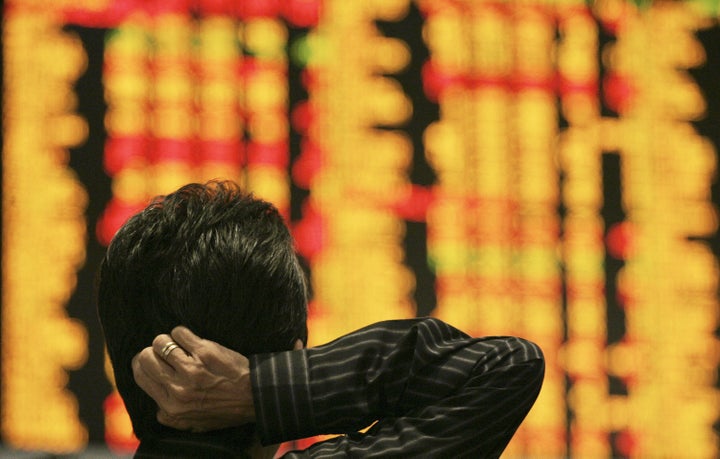
Credit-default swaps -- the financial instrument that helped bring down AIG and played a key role in causing the biggest financial crisis since the 1930s -- are, a year after the fall of Lehman Brothers, back en vogue on Wall Street, Bloomberg reports. Instead of being viewed as tools of financial disaster, CDSs are said to be contributing to the credit market's renewed confidence.
Here's why, according to Bloomberg:
The cost to protect against a failure by New York-based Goldman Sachs Group Inc., Charlotte, North Carolina-based Bank of America Corp., and 12 of the other biggest derivatives dealers dropped 66 percent in the past six months, according to an index of swaps compiled by Credit Derivatives Research LLC. While the U.S. struggles with the slowest recovery since 1945, the market where investors protect themselves from default and speculate on corporate debt shows confidence is the highest since June 2008.
For those who need a reminder of just what CDSs are and how they became such a phenomenon, it's worth reading (or re-reading) Matt Taibbi's story "The Big Takeover" that was published in Rolling Stone last spring.
Here is Taibbi on how the CDS was created:
The CDS was popularized by J.P. Morgan, in particular by a group of young, creative bankers who would later become known as the "Morgan Mafia," as many of them would go on to assume influential positions in the finance world. In 1994, in between booze and games of tennis at a resort in Boca Raton, Florida, the Morgan gang plotted a way to help boost the bank's returns. One of their goals was to find a way to lend more money, while working around regulations that required them to keep a set amount of cash in reserve to back those loans. What they came up with was an early version of the credit-default swap.
In its simplest form, a CDS is just a bet on an outcome. Say Bank A writes a million-dollar mortgage to the Pope for a town house in the West Village. Bank A wants to hedge its mortgage risk in case the Pope can't make his monthly payments, so it buys CDS protection from Bank B, wherein it agrees to pay Bank B a premium of $1,000 a month for five years. In return, Bank B agrees to pay Bank A the full million-dollar value of the Pope's mortgage if he defaults. In theory, Bank A is covered if the Pope goes on a meth binge and loses his job.
When Morgan presented their plans for credit swaps to regulators in the late Nineties, they argued that if they bought CDS protection for enough of the investments in their portfolio, they had effectively moved the risk off their books. Therefore, they argued, they should be allowed to lend more, without keeping more cash in reserve. A whole host of regulators -- from the Federal Reserve to the Office of the Comptroller of the Currency -- accepted the argument, and Morgan was allowed to put more money on the street.
Credit-default swaps are not the only part of the pre-financial-collapse era that has returned in the last few months. As Arianna pointed out in August:
"Everybody understands," Geithner said on This Week, "that we cannot have our financial system go back to the practices that brought this economy to the brink of collapse." It's true, we all understand it. The problem is, the system has already gone back. Risky derivatives are traded again, bonuses disconnected from performance are being handed out again, bank lobbyists are spending tens of millions to undermine necessary regulatory reforms again. The only real long-term solution is for the government to ensure that there are no financial institutions too big to fail anymore, so that if they continue to act irresponsibly, then they are just allowed to fail.